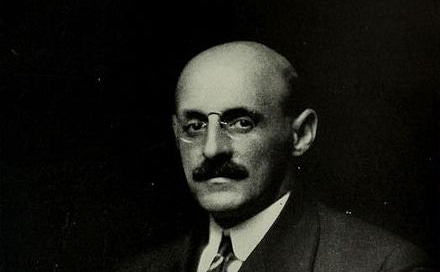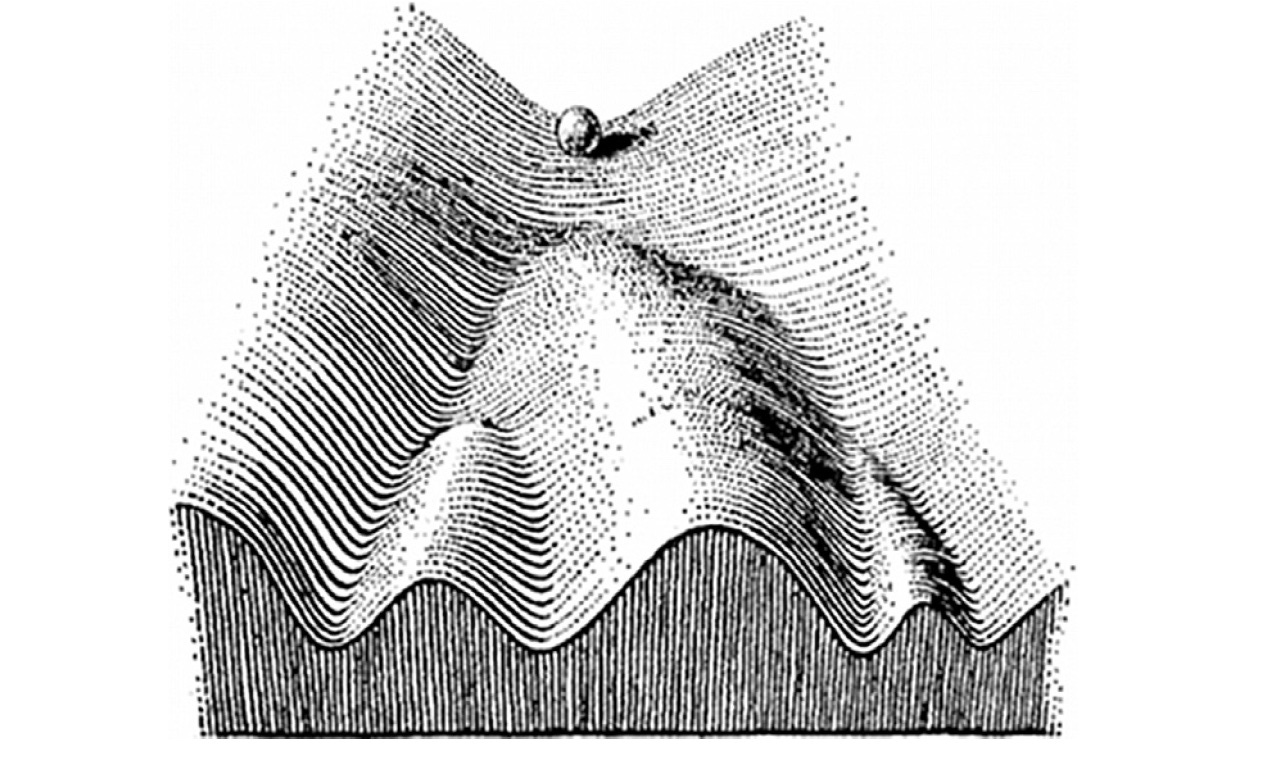Abraham Flexner, Wikipedia
Trofim Lysenko, Wikipedia
The bottom dropped out for medicine in 2020….Why? There are numerous possible reasons which I will discuss later on in this post. However first I need to set the stage:
Many people know the story of Abraham Flexner. He was commissioned by the Carnegie Foundation to make recommendations on improving the quality of medical education in the United States, thereby improving the quality of medical care. He submitted his report in 1910:
https://en.wikipedia.org/wiki/Flexner_Report
Read this Wikipedia entry on his work with somewhat of a skeptical eye. The Wikipedia entry has been substantially modified from how it appeared only a few years ago. As with many things today, the article now conforms to a current ideological agenda.
Flexner was not a physician, a scientist or even a medical educator. He graduated from Johns Hopkins with a degree in Classics and subsequently opened a college preparatory school in Kentucky. His 1908 work, The American College, was a critique on the status of American higher education. This work came to the attention of Henry Pritchett, the president of the Carnegie Foundation which commissioned his study on medical schools. The major recommendations of his 1910 study resulted in a radical shift to a scientific approach to healthcare and a standardization of both prerequisites for entry into medical school as well as to the courses of study in medical schools.
There is little doubt that his report and the resulting changes to medical education and thus, by extension, medical care had profound impacts on society, many good, some questionable. It has been criticized for changing the focus of medicine to disease treatment rather than preservation of health. Recently the report also has been criticized for instilling a degree of “systemic racism” by recommending the closure rural and historically black medical schools. In addition, in the minds of some, it tightly bound medicine with the burgeoning pharmaceutical industry.
It is beyond the scope of this post to extensively explore this relationship with what has become “Big Pharma”. John D. Rockefeller contributed heavily to implementing the recommendations of the Flexner Report. At the same time he diversified his petrochemical empire into the manufacture of patentable medicines. E. Richard Brown outlines this connection in his critical work, Rockefeller Medicine Men: Medicine and Capitalism in Amarica:
https://www.amazon.com/Rockefeller-Medicine-Men-Capitalism-America/dp/0520042697
Without the Flexner Report, it is doubtful that many of the “complicated” healthcare problems would have been successfully tackled: infectious diseases, the biochemical basis of many diseases, severe trauma, etc.. But there was a cost. The focus on disease rather than health was an insidious flaw that would come back with a vengeance once the “merely complicated” problems of healthcare were addressed. The “truly complex” problems were ignored, or even made worse. The distinction is critical. “Complex” is not just “really complicated” as I once thought. A different tool set is needed for each. In complicated problems, the answers may currently be unknown, but they are knowable. The scientific method works. Expert opinion is paramount in directing the steps necessary to reach a valid conclusion.
However, the situation with complex problems is entirely different. Here we are dealing with unknowable unknowns. Cause and effect are only seen in retrospect. Experts may actually hinder finding the answers as their entrained thinking acts as an anchor on reaching the proper conclusions. Consider this concrete example: performing coronary artery revascularization is “merely complicated”. Finding and ameliorating the cause of the coronary artery disease is “truly complex”. As a general rule, dealing with chronic diseases is complex, as it involves the only loosely-predictable actions of the patient and society as a whole. Attempts to impose external order, rather than using “attractors” to engage the “emergent order” of the complex system, invariably fail.
Imagine a thin sheet of metal, held at a slant, with depressions of various depths hammered into its surface. Roll a marble down the sheet and it will fall into one of the “attractor wells” in the surface. The deeper the depression, the stronger the force needed to jiggle the marble free and allow it to continue its course down the slanted sheet. Now imagine the wells are actually valleys that direct the flow of the marble. This is the model of an epigenetic landscape proposed by C. H. Waddington (Waddington, CH: The strategy of the genes. London, Allen & Unwin, 1957, p. 29):
Like moving the marble in this visual explanation of what became the subject of epigenetics, in a Complex Adaptive System such as health, one must augment the positive attractors (deepen those valleys) and dampen the negative (fill in those valleys).
I realize that to completely understand this, a much more extensive discussion of Complexity Science and Complex Adaptive Systems is necessary. Perhaps this will be the subject of another substack. Suffice it to say that Flexner and those who adopted his report were operating from the complicated worldview, and it worked very well for quite some time.
At the same time the recommendations of the Flexner Report were being implemented in the United States, a quite different, yet in some ways an amazingly similar, approach to science was undertaken in the Soviet Union. Agriculture was placed in the hands of Trofim Lysenko with catastrophic results:
https://www.theatlantic.com/science/archive/2017/12/trofim-lysenko-soviet-union-russia/548786/
Lysenko believed that crops would respond to Marxist ideology. Dismissing Mendelian genetics, he thought that crops could be manipulated to change such things as germination schedule and water and sun requirements. Having been “educated” these crops would transmit these changes to their progeny. He forced farmers to plant seeds close together as, according to his “Law of the Life of Species”, plants from the same “class” would not compete with one another.
His resulting experiments and state-sanctioned policy produced massive crop failures and caused the death of millions through starvation. In this respect, Lysenko likewise failed to understand the emergent order of agriculture and attempted to impose that order through ideology. In an ironic way, Lysenko’s approach was somewhat similar to the epigenetic theory of Waddington, but he utilized ideology rather than biological principles in its application.
Unfortunately, the above article, while enlightening regarding the factual details of the Lysenko experiments, also illustrates what happens when journalists allow their ideology to intrude upon their exploration of the facts. The author of the article, Sam Keane, could not resist the questionable linkage of those who do not share his own politics to be equated with the actions of Lysenko.
In order to show the relevance of Flexner and Lysenko to 2020, additional pieces of the puzzle must be explored. In Chapter 8 of his masterful book on Complexity:
M. Mitchell Waldrop explains the fascinating work of Bak, Chang and Wiesenfeld on “self-directed criticality”. They used the model of a sand pile. As sand is dribbled onto a tabletop, it gradually gets higher and higher until, just one more grain of sand causes the pile to collapse. The sand pile has reached a state of criticality.
The final grain of sand in healthcare fell on May 25, 2020….
The death of George Floyd launched both a literal and ideological firestorm. Cities burned and American science and medicine rapidly fell into our own brand of Lysenkoism. In a frenzy of illogical thought, the “scientists” who until then demanded we adhere to “the science” of social distancing and mask wearing (both of which were proven to be unscientific) now demanded we disregard “the science” in favor of “social justice”:
https://www.politico.com/news/magazine/2020/06/04/public-health-protests-301534
Biology was out; ideology was in. Good-bye Flexner; hello Lysenko. On the surface, this seems different, but when we look deeper, it is just a different way in which to impose order and make something inherently “truly complex” into something “merely complicated”. When order is imposed on a Complex Adaptive System, instead of working on the attractors, disaster always follow.
And the sand keeps falling. Our faith in the once rock-solid institutions such as the CDC, NIH and FDA has been shattered when faced with the inconsistencies of their actions and their ties to Big Pharma. Trust in physicians and hospitals is at a low point, at least in my lifetime. This has made its way into medical education, with huge implications. Academic medicine now trains physicians (and treats patients) based on “Diversity, Equity and Inclusion”. In reality it is based on “Orthodoxy, Inequality and Exclusion”:
https://news.yahoo.com/top-med-schools-weed-dei-165745578.html
Of course, this is exactly the wrong thing to do if our goal is to restore faith in the institution of healthcare and its professionals. Our faith in “science” has been broken. In its stead demanding adherence to faith in ideology will make it even worse!
So, is all of this just a manifestation of “self-directed” criticality in multiple disparate areas of our lives? Perhaps….But there may be an alternate explanation.
When taken separately each of these processes can be viewed as individual vectors, without a connection to each other:
However, what if they ARE connected?
What if each of these vectors is part of a larger plan, leading to an inflection point??
I would propose that they very well may be connected, and this substack by Dr. Naomi Wolf may have the answer:
Dr. Wolf postulates, with a good deal of supporting evidence, that powerful negative spiritual forces are at work in many changes overtaking not just medicine, but our lives in general.
To the skeptics, let me paraphrase the famous detective, Sherlock Holmes:
First, eliminate the impossible. Whatever is left, no matter how improbable, is the answer.
So, what is now our task? It is much more “complex” than I originally thought. Multiple efforts must be followed simultaneously. As Newt Gingrich stated in an opinon piece on March 5, 2023, we are living in the biggest scandal in American History:
https://www.foxnews.com/opinion/biggest-scandal-american-history
There must be a recognition that severe damage has been done and those who actively or passively allowed this to happen must be held accountable. The truth about COVID and all of its ramifications, must be exposed. Those damaged must, as much as possible, be restored. Those who, through lack of knowledge or courage did not stand against what a brave few knew to be wrong must be rehabilitated. Censorship of dissent must be stopped. The control of knowledge and scientific evidence must be freed from ideological control. It must be clearly understood that those in positions of power and trust and those responsible for the health of all of us must be judged on their ability to perform the job and not on ideology or opinions on social justice. To do otherwise is to continue to follow in our current state of social Lysenkoism.
In the attempt to reverse the immense damage done to medicine, science and healthcare, we will need to follow the recommendations of the Carnegie Foundation! We need to reform all heath care (not just medical) education! If education in healthcare is transformed, transformation in healthcare practice will follow.
This reform will never be accomplished solely or even primarily at the medical school level. Academic medicine has become a major source of the problem. The reform must be started at the undergraduate and secondary school levels. The qualities of critical thinking, ethical behavior, courage and moral responsibility must be fostered. In addition, an understanding of the differences between what is merely complicated and what is truly complex, and the different tools needed in each must be taught. Facility with both these domains is necessary for optimum healthcare!
This daunting task must be tailored to the specific needs of those entering the health professions. Although these qualities should ideally be evident in each of us, those entering the healthcare professions have unique, singular challenges which will need to be addressed.
In my estimation, Hillsdale College with its reach backward into secondary education as well as forward with its Academy for Science and Freedom, is the best situated to tackle this challenge. I hope the need is met.
However, as much as this is a fight to reform education and the medical profession, it is also a spiritual battle, as pointed out by Dr. Naomi Wolf. As such, a two-pronged approach to return us the solid ground the United States (and the global community) once enjoyed is sorely needed. The first prong must, of necessity, be promoted by professionals: teachers, physicians, nurses, researchers and all other healthcare professionals, to name a few.
But the second prong is something in which everyone reading this post can meaningfully participate.
PRAY! Pray as though your life depended upon it, because it does.







